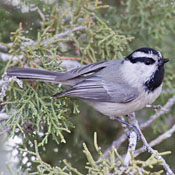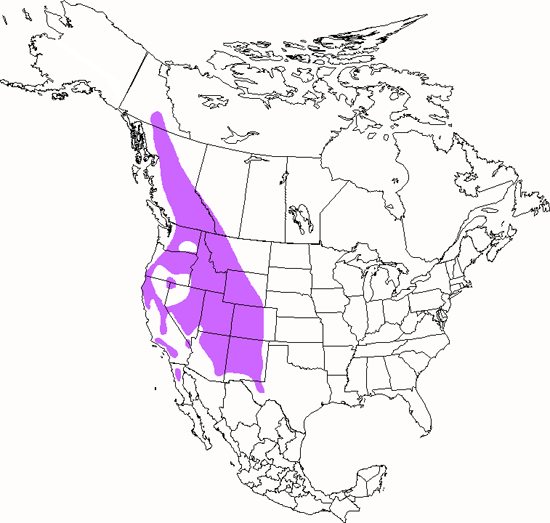Mountain Chickadee
Poecile gambelii

Perching

Length: 5 in. (13 cm )
Usually restricted to mountainous coniferous forest, only during especially harsh winters does the Mountain Chickadee descend to lower elevation riparian areas and broad-leafed forests for a month or so. This species commonly occurs in large mixed species foraging flocks with nuthatches, warblers, sparrows, juncoes, and bushtits, where they look for insects and seeds. Its nest is in a tree cavity
The four-digit banding code is MOCH.
Bibliographic details:
- Article: Mountain Chickadee
- Author(s): Dr. Biology
- Publisher: Arizona State University School of Life Sciences Ask A Biologist
- Site name: ASU - Ask A Biologist
- Date published:
- Date accessed:
- Link: https://askabiologist.asu.edu/activities/bird/mountain-chickadee
APA Style
Dr. Biology. (). Mountain Chickadee. ASU - Ask A Biologist. Retrieved from https://askabiologist.asu.edu/activities/bird/mountain-chickadee
Chicago Manual of Style
Dr. Biology. "Mountain Chickadee". ASU - Ask A Biologist. . https://askabiologist.asu.edu/activities/bird/mountain-chickadee
Dr. Biology. "Mountain Chickadee". ASU - Ask A Biologist. . ASU - Ask A Biologist, Web. https://askabiologist.asu.edu/activities/bird/mountain-chickadee
MLA 2017 Style
Be Part of
Ask A Biologist
By volunteering, or simply sending us feedback on the site. Scientists, teachers, writers, illustrators, and translators are all important to the program. If you are interested in helping with the website we have a Volunteers page to get the process started.





